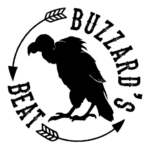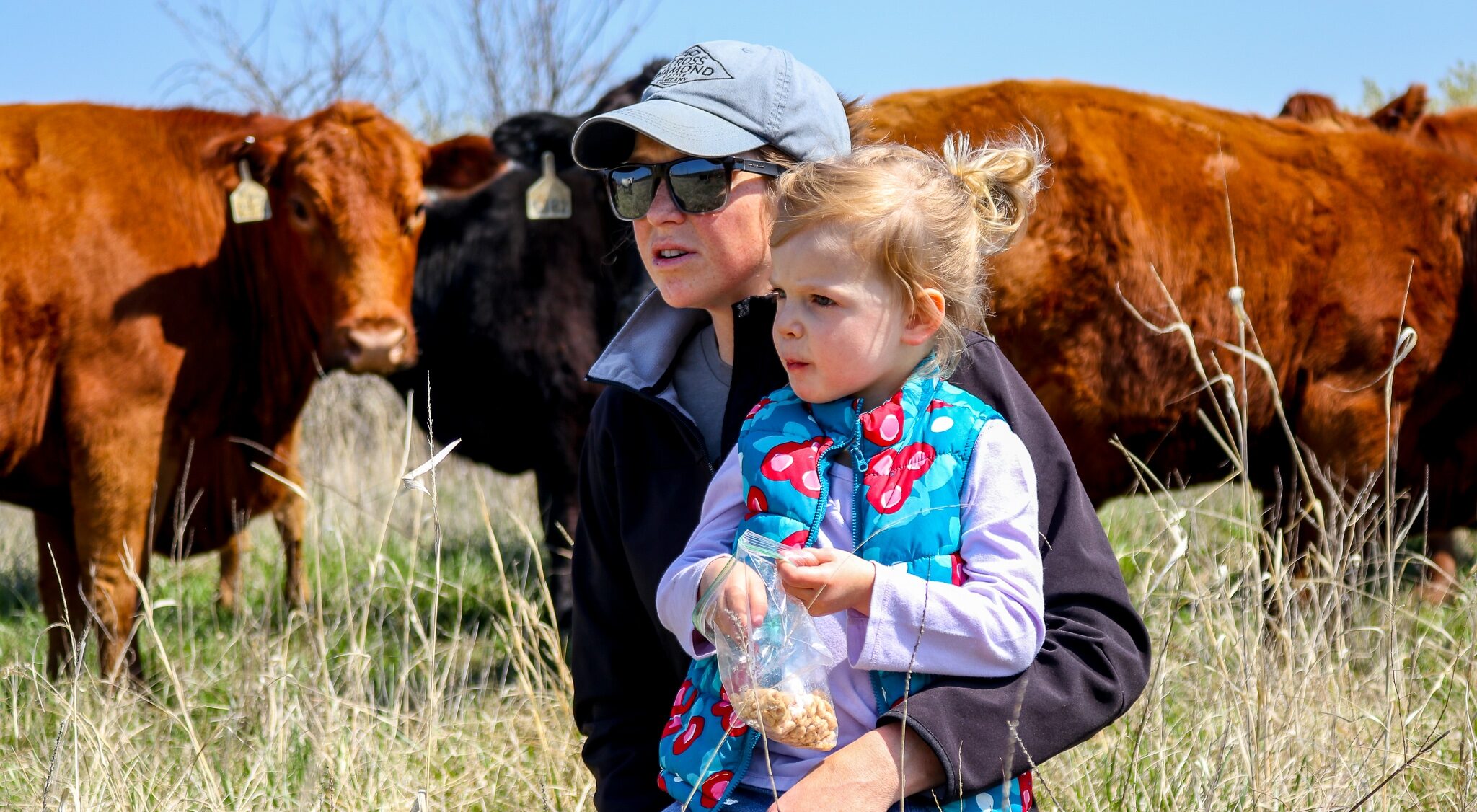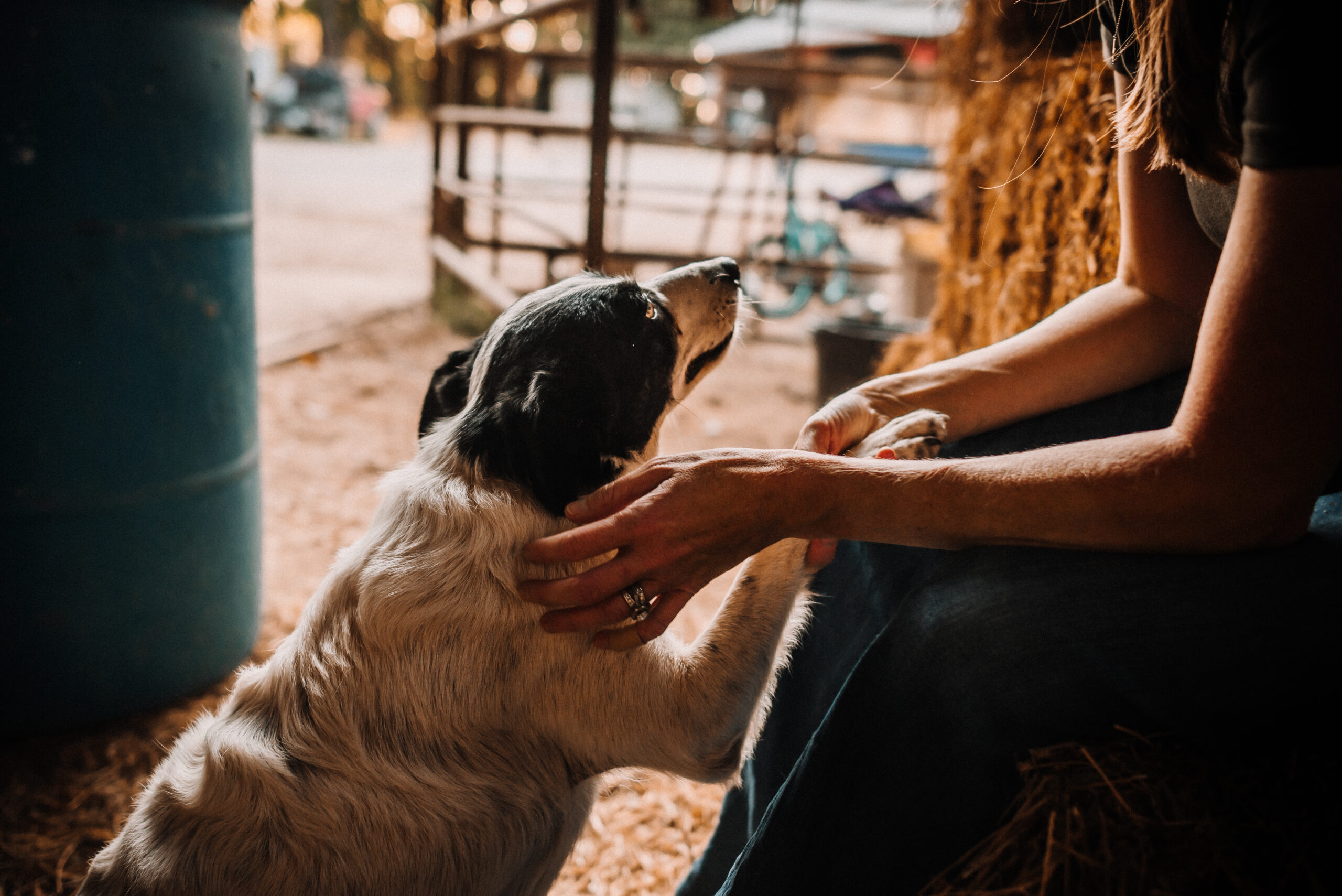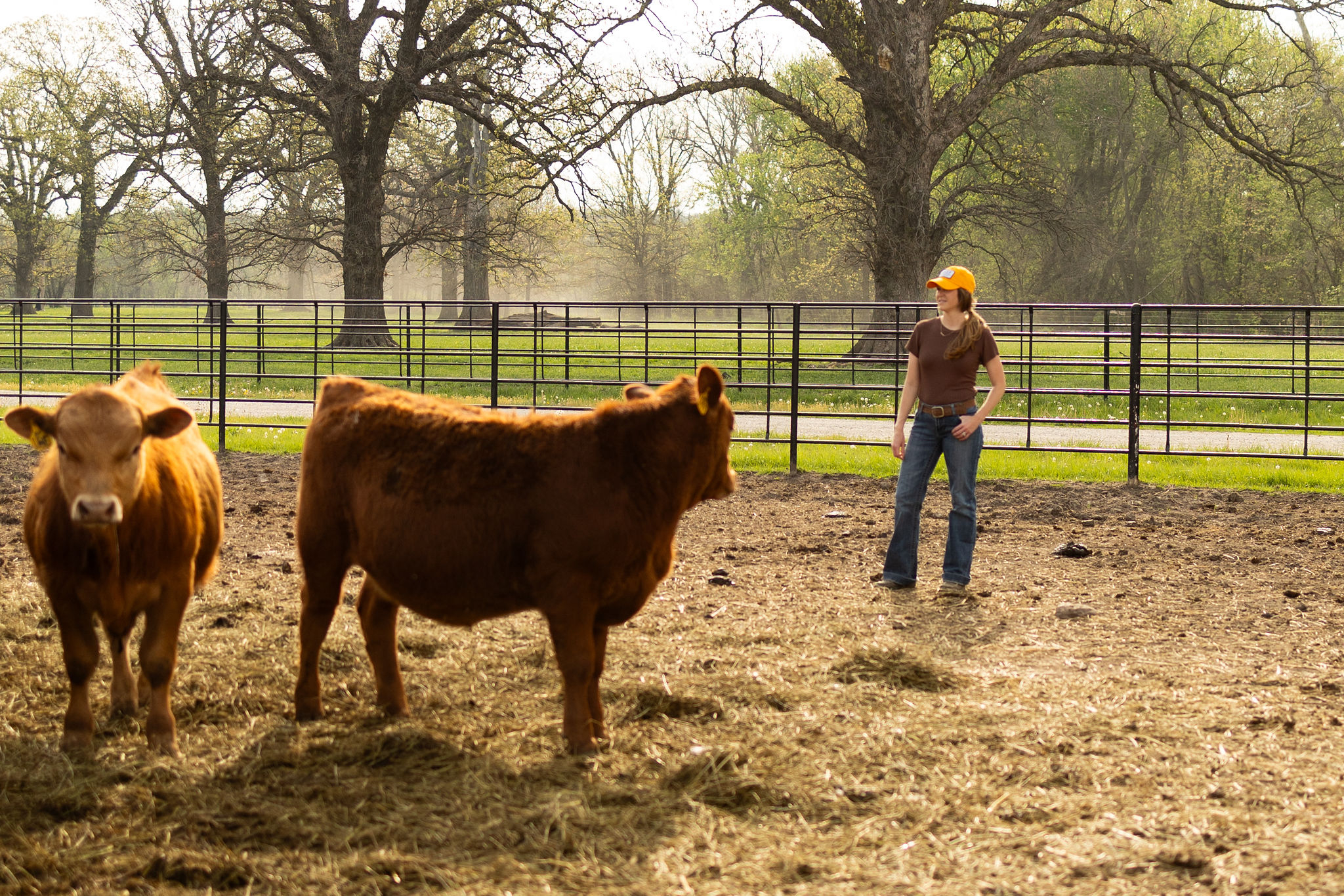I think it’s highly important to know how our food is produced and that includes knowing how it was planted, bred, raised, harvested, processed and prepared. Knowledge is power and during these days of conspiracy theories, social media bots and “fake news,” it’s important to have confidence in the facts that are being presented. Confidence in the process lends itself to confidence in the product.
If you’ve visited this ole blog before you know a few things about me: I LOVE science, I LOVE my cows and I won’t stand for misinformation. Therefore, the soup du jour is myth-busting using, you guessed it, science as the basis. These are some of the biggest myths in the beef and cattle community and I am happy to dispel them using facts and figures that are reputable and cited – let’s get to busting!
- Myth #1: Organic beef is better.
- It’s a common misconception that organic anything is better for you. However, did you know that organic only refers to the way the animal was raised and is not indicative – in any way, shape or form – of the health or nutritional benefits of a product? It’s true – for example, a 3 oz. serving of organic lean beef is only 150 calories, contains ~21 grams of protein in addition and is a good or excellent source of nine more essential nutrients. Similarly, a 3 oz. serving of traditional, non-organic beef is only 150 calories, contains ~21 grams of protein in addition and is a good or excellent source of nine more essential nutrients. See what I mean? All beef is healthy and nutritious.

It’s well known that I don’t like green foods – including grass. Good thing I don’t have to choke down that cellulose for my nutrition, the girls eat it right up!
- It’s a common misconception that organic anything is better for you. However, did you know that organic only refers to the way the animal was raised and is not indicative – in any way, shape or form – of the health or nutritional benefits of a product? It’s true – for example, a 3 oz. serving of organic lean beef is only 150 calories, contains ~21 grams of protein in addition and is a good or excellent source of nine more essential nutrients. Similarly, a 3 oz. serving of traditional, non-organic beef is only 150 calories, contains ~21 grams of protein in addition and is a good or excellent source of nine more essential nutrients. See what I mean? All beef is healthy and nutritious.
- Myth #2: Raising beef is counterproductive to stopping climate change.
- How do cattle help the environment? Let me count the ways! First and foremost – cattle are upcyclers. They eat cellulose plant material – found in pastures that aren’t suitable for growing crops and other food – and upcycle it into a protein of the highest quality. We as humans can’t eat fescue grass but my cows love it and use it to raise calves that turn into steaks, roasts and burgers for you and me. That’s quite the conversion! Secondly, cattle are recyclers in that they eat by-products from human food production; by-products that would normally sit in a landfill and rot but when fed to cows, are recycled into delicious and nutritious beef. Such by-products include almond hulls, peanut hulls, grapes, tomato waste, pineapple bran, sunflower meal, broccoli, carrots, apples and much, much more! Eating these by-products drastically cuts down on the amount of food waste our country creates which is a huge contributor of GHG. Think about it, we waste 40% of the food in our country and when we throw food in the garbage, all the resources (land, time, water, fertilizer, herbicide, money, fuel) that went into growing, harvesting and transporting it are completely wasted. Cattle make a dramatic impact on food waste in the U.S. Thirdly, cattle sequester carbon into the soil during grazing. Basically, when cattle are grazing in pastures (which they do for most of their lives), they are restoring carbon into the soil while simultaneously reducing greenhouse gas emissions. Pastures and grasslands make up nearly 30% of U.S. land mass; avoiding the conversion of this land into tillable crop acreage can help prevent further greenhouse gas emissions.¹ And last, but certainly not least in importance, cattle contribute less than 2% of GHG emissions in the U.S.² Full stop. If you take nothing else away from this, take that figure. According to the Environmental Protection Agency, cattle contribute less than 2% of GHG emissions in the U.S. If you need to reread that a few times before moving on, I totally support you.
- Myth #3: Pastures for cattle could be used for growing human food.
- I love my Kansas prairie home and I lived in the gorgeous Flint Hills of Kansas for eight years. The Flint Hills are part of the last Tall Grass Prairie system in the U.S. The millions of acres of hilly grassland are perfect for cows to graze but just a short few inches below the surface of the soil lies the namesake of the Flint Hills – limestone and flint rock. Pounds upon pounds upon pounds of it, actually. In fact, limestone is such an important part of the Kansas prairie history, that the coveted and historic buildings on Kansas State University are built from that limestone.
Have you ever tried to till a garden that only has a few inches of topsoil above the rock? Tremendously difficult,
Who runs the ranch? Girls!
right? Multiply that effect by a gazillion and you’ve now got an idea of how impossible it is to grow crops or vegetables on most of the grazing lands in the U.S. If not the Flint Hills of Kansas, the mountains of Montana or the highlands of Nevada yield the same experience. Great for cows, bad for plows.
- I love my Kansas prairie home and I lived in the gorgeous Flint Hills of Kansas for eight years. The Flint Hills are part of the last Tall Grass Prairie system in the U.S. The millions of acres of hilly grassland are perfect for cows to graze but just a short few inches below the surface of the soil lies the namesake of the Flint Hills – limestone and flint rock. Pounds upon pounds upon pounds of it, actually. In fact, limestone is such an important part of the Kansas prairie history, that the coveted and historic buildings on Kansas State University are built from that limestone.
- Myth #4: Most beef farmers and ranchers are men.
- While the majority of U.S. farmers and ranchers are men, women are gaining traction and market share! In fact, according to the 2017 Ag Census, more than half of farms have at least one female producer. Additionally, in 2017 (which is the most recent available data) the U.S. had 1.2 million female ag producers which accounts for 36% of all ag producers. Women in agriculture continue to increase yearly – we are not going anywhere!
- Myth #5: Farmers and ranchers raise beef the way their grandparents did decades ago.
- While we do lean on our predecessors for their insight and advice from everything to cattle behavior to calving troubles to genetic decisions, a lot has changed since my grandpa was a herdsman in the 1960s. Today, the most up-to-date and advanced science and technology we can get our hands on is ingrained in every single aspect of our cattle ranch. We have Ph.D. animal nutritionists who develop balanced rations for our herd. We work closely with our veterinarian to manage our herd’s vaccination and animal health protocols. We seek the insight from plant and soil biologists to help us manage our grass, soil and water and we make genetic decisions using genomically enhanced EPDs (think of them as amped up Ancestry.com stats for cows and bulls) so that we can raise cattle efficiently. Everything we do – from farm to fork – is extensively analyzed and recorded so that we can continue to improve our practices, raise more beef and improve our sustainability footprint.
What other myths about the beef and agriculture do you see in the news? What questions do you have for me, a real-life cattle rancher? I’m an open book so ask away in the comments!
~ Until next time ~
Buzzard
¹ http://www.dasnr.okstate.edu/Members/donald-stotts-40okstate.edu/carbon-sequestration-a-positive-aspect-of-beef-cattle-grazing-grasslands
² EPA. 2018. Inventory of U. S. Greenhouse Gas Emissions and Sinks: 1990-2016. U. S. Environmental Protection Agency, Washington, D. C.
Want posts in your inbox? Sign up on the homepage for automatic delivery – no spam emails, ever. Additionally, if you want a behind the scenes look at ranch life, rodeo, parenting and all sorts of other fun stuff, follow my Instagram account @brandibuzzard.



